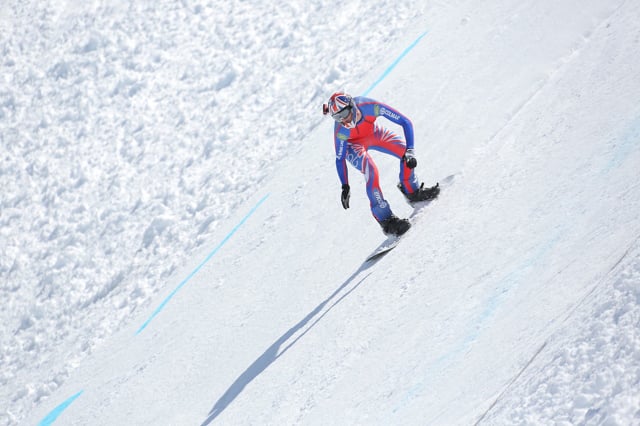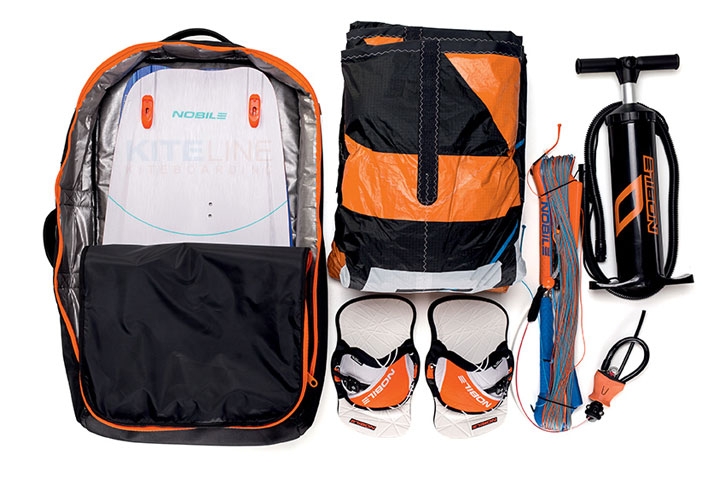
Any guesses on what all these sports have in common? I’ll throw skateboarding in the mix for another clue. You probably guessed it – they’re all board sports, and are all great fun to learn and do. So how are these sports similar, and how are they different? After all, some you can do locally, some you probably can’t, some are easier to learn then others, and some are more expensive then others. It’s a very broad question, and one I’ll attempt to answer by discussing the fundamental considerations of each. Here we go for a Kitesurfing/Snowboarding/Surfing/Windsurfing comparison & crossover!
The Basics

Let’s talk about the riding surface. Again, any guesses on which one is the odd one out? You probably guessed again. Snowboarding. Kitesurfing, windsurfing and surfing all take place on the water, as denoted by the term surf. Snowboarding takes place on snow, which provides a very low friction surface to gain some very fast speeds on – heads up to our own Rupert Cawte, who clocked an amazing 151 kph to match the British snowboarding speed record. And for kitesurfing? Links for both of these at the bottom of the page.

Secondly, propulsion. This splits the field down the middle. Both windsurfing and kitesurfing use the wind to propel rider across the sea, whilst snowboarding and surfing rely on gravity to either pull the rider down the mountain, or down the face of a wave. This makes for an interesting ride dynamic. Both snowboarding and surfing are what I call stop and go sports, with sessions being peppered with chair lift rides or wave seeking, whilst windsurfing and kitesurfing, providing the wind plays ball, are more or less a constant ride. So snowboarders look out for snow, surfers check the swell forecast, and windsurfers and kitesurfers are looking for a good wind forecast.
Learning
One of the beauties of all these sports is that they all relate in terms of board control. Simply put, if you lean the board left, you turn left, and if you lean the board right, you turn right, much like a skateboard. This technique is key across all the sports as it decides you direction of travel, is a way of controlling your speed, and very much adds to the fun factor. Great!

This means that, generally speaking, if you’ve learnt one of the sports, it’s easier to learn another. A great example of this is kitesurfing and snowboarding. Due to my experience as a kitesurfer, and specifically my ability to ride toeside, I was able to apply these techniques to snowboarding, and after an afternoon of steady progression, I managed to get down the mountain looking like a snowboarder – to my relief frankly.
Fitness
We have another odd one out here. Perhaps, not so easy to guess, this is surfing. Surfing requires a high level of cardio and core strength. Paddling back out to catch a wave, and paddling onto a wave requires both, whilst once on the wave, you have to pop yourself into a standing position, ready to make the turn into the wave. In decent surfing conditions, the environment is demanding, as tides, wind and underwater hazards are thrown into the mix to add to the challenge, but also the fun.

Next in line for fitness I would say is windsurfing. Lifting up the sail, sheeting in, and changing direction requires a reasonable amount of agility and strength, particularly in the upper body, though once hooked into the sail via a harness, cruising is pretty easy peasy.
Both kitesurfing and snowboarding are easily accessible, with neither requiring a particular focus on strength or fitness; gravity and wind do pretty much all the hard work! Again, as long as you follow the prescribed routes into these sports, fitness shouldn’t be much of any issue. Of course your body will adjust according to the demands that you place on it, and you will develop the fitness required as you learn.
Practicality
How practical is the sport to you? Are the right conditions easily accessible to you? How easy is it to ship the equipment around? As an example, here in Camber sands, both kitesurfing and windsurfing are logical choices of board sports to pursue. We have good beach access, plenty of reliable wind, and a well established community of wind sports-ers to join.

Surfing, on the other hand, is not a good choice. It’s not often that we get the perfect storm necessary to make good surfing waves. As is well known, this discipline belongs to the more westerly coasts of the UK. As the channel gives way to the Atlantic, there is plenty of fetch to enable good waves to develop, whilst these coasts are more exposed to receive the rollers coming in from the Atlantic.
Snowboarding of course can only be done where there is snow, making it very much a seasonal pursuit and requiring the need to fly, though any nearby dry slope can do a pretty good job at replicating the sensation.
OK, half way house in our Kitesurfing/Snowboarding/Surfing/Windsurfing comparison & crossover!
The Gear

The beauty of kitesurfing is that all the gear can be packed down into a sizeable backpack, with folding boards available to further reduce the size. This makes getting around on public transport a relatively easy affair, though you’ll no doubt receive some perplexed looks from fellow passengers. In contrast, windsurfing equipment, once broken down, still necessitates the need for a van or large car, making it almost impossible for anyone who doesn’t have these facilities.
Surfing comes in close behind in terms of size, and due to their fragile construction, always carry a risk when being flown anywhere. Renting on location is often a better option. With any good board bag, snowboarding is relatively easy to get on location, with many airlines offering a specific service. But what trumps the lot? A good old Penny skateboard!
Cost
The initial outlay for windsurfing gear is about a 3rd more expensive then kitesurfing gear, but as the sails are more sturdy then kites, over time they don’t need to by replaced as often as kitesurfing gear. As an alternative to new, both sports have well developed second hand markets, though it’s important to know exactly what you’re buying as some older gear can be dangerous. In terms of lessons, kitesurfing tends to require more, this partly due to the fact that there is more safety to be taught, and that the risks are greater to yourself and others if you don’t have lessons. With windsurfing you’ll likely be on the board and riding on your first lesson. All in there’s little to it between kitesurfing and windsurfing. For our lesson prices have a look here – https://www.thekitesurfcentre.com/prices

Surfing is cheaper, as once you have your wetsuit, you only need a board, which can cost anything from £50 to £500. Lessons are not required to get out and have some safe fun, though a good understanding and respect for the beach that you choose to surf at is. Snowboarding kit all in is comparable with surfing, though lessons are advised, and factor in the holiday cost: after flights, accommodation and lift pass, you can be looking at a tidy sum. I would say £500 all in for a week in the Alps will be the bare minimum; pain au chocolats not included.
Feel Of The Ride
Each of these sports differs significantly in how it feels, and what is most enjoyable to you is of course dependant on your preferences. Having experienced all 4 to some extent, for me nothing compares to the thrill of snowboarding. But as I live near the south coast of the UK, and not the Alps, kitesurfing is the best option for me. I would choose this over windsurfing as, largely due to kitesurfing’s jumping ability, the potential to develop tricks and techniques is almost boundless, whereas windsurfing is relatively limited to cruising, though this is also a great buzz. Surfing isn’t really an option due to the lack of decent conditions, though if I were really committed it wouldn’t be impossible, particularly with the advent of SUP boards, that are more adept at catching surf then their traditional counter parts.

So that’s my Kitesurfing/Snowboarding/Surfing/Windsurfing comparison and crossover. All of these sports are great fun, and are a great way to help you keep fit, happy and healthy. Hopefully this will provide you with an understanding of the main considerations. At the end of the day, there is no substitute for putting on a wetsuit, or pair of salopettes, and giving it a go yourself, so book some time off work, book a lesson, and get involved.
Here’s some more reading –
Rupert Cawte’s snowboarding speed record – https://www.datawax.com/waxes1/news-blog/rupert-cawte/
